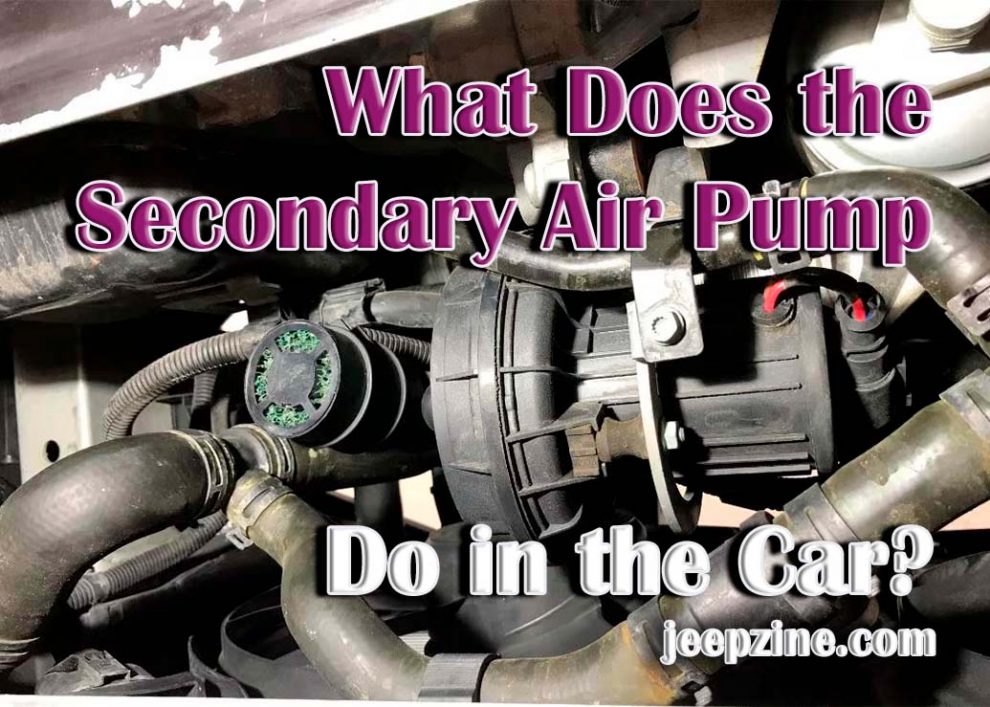The secondary air pump is an essential component of the internal combustion engine in modern motor vehicles, providing a necessary function in fuel-burning efficiency. It reduces the pollutants released into the environment from your automobile’s exhaust system. It is designed to inject air into the exhaust stream to help burn off unburned gases. Without it, cars would produce much higher emissions than they currently do and would be far less fuel-efficient. In this article, we will discuss what a secondary air pump does, its benefits, and its common associated issues. We’ll also provide some tips on how to keep your SAP in good working order so that you can ensure that your car continues to operate with maximum efficiency and minimal environmental impact.
What Does the Secondary Air Pump Do?

Benefits of the Secondary Air Pump
The secondary air pump helps reduce emissions from vehicle exhaust, making them more environmentally friendly. It helps improve air quality in cities and other areas where many cars are driven regularly. This pump also helps increase fuel efficiency by ensuring that all fuel is burned off during combustion. It reduces tailpipe emissions and improves overall engine performance by providing an optimized amount of fresh air to burn more efficiently. The secondary air pump can also help reduce engine wear since it ensures that all fuel is completely burned for maximum efficiency. Each time you drive your car with a working SAP, you do your part to reduce carbon emissions and help the environment.
Common Issues with a Secondary Air Pump
When a secondary air pump begins to fail, it can cause various problems with the engine. Common issues include:
-
Faulty pump motor: One of the most common issues is the pump motor failing. It can be due to wear and tear, electrical problems, or moisture infiltration. A failed motor will prevent the pump from operating, leading to ineffective emissions control.
-
Clogged hoses or valves: Dirt, debris, and carbon deposits can accumulate in the hoses or valves connected to the secondary air pump, restricting airflow. This restriction can hamper the system’s effectiveness and cause the vehicle to fail an emissions test.
-
Failed check valve: The check valve ensures exhaust gases don’t flow back into the pump. If this valve fails, harmful gases can damage the pump or even cause water from the exhaust to seep into the pump, leading to potential failure.
-
Electrical issues: Like many components in modern vehicles, the secondary air pump is electronically controlled. Wiring issues, blown fuses, or faulty relays can lead to the pump not getting the power it needs to operate.
-
Noise: A failing secondary air pump may produce unusual noises. If the pump begins to emit a loud whining or humming sound, it might indicate that it’s on its way out or is malfunctioning.
If a problem with the secondary air pump is suspected, it must be addressed promptly. Neglecting problems may result in higher emissions, reduced engine efficiency, and possible harm to other parts.
Conclusion
The secondary air pump is an essential device in the operation of a vehicle. It is responsible for providing additional air to the exhaust system to reduce harmful emissions from the car. This air helps the catalytic converter function more effectively, which helps reduce pollutants that are released into the atmosphere. The SAP pumps air directly into the exhaust manifold and the pipes connected to the catalytic converter. This extra air allows for a more complete fuel combustion, resulting in fewer pollutants reaching our environment. The SAP also gives off heat, which helps keep exhaust gasses warm and allows them to expand more quickly, reducing back pressure on engine components such as valves and pistons and improving fuel economy.

